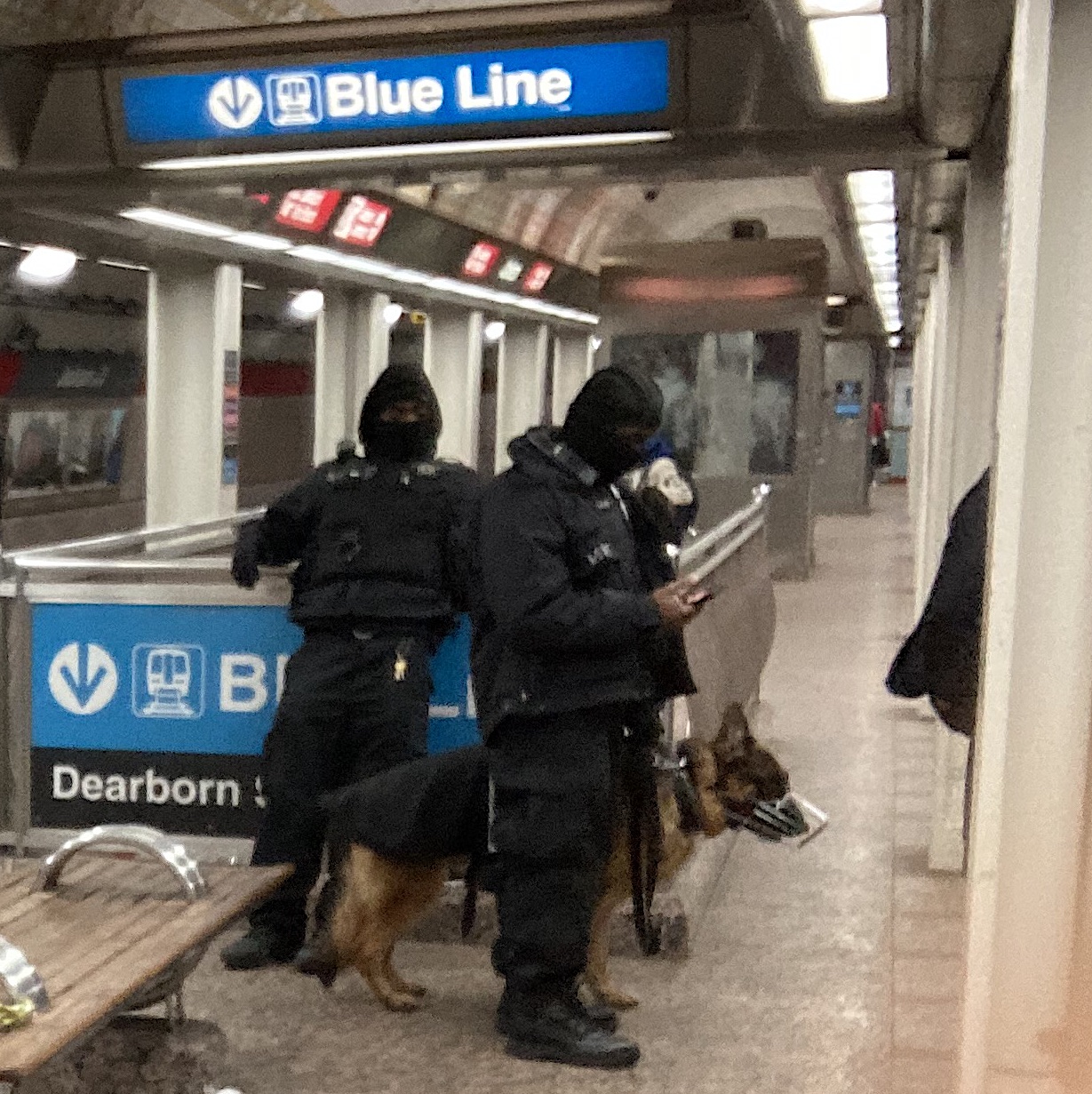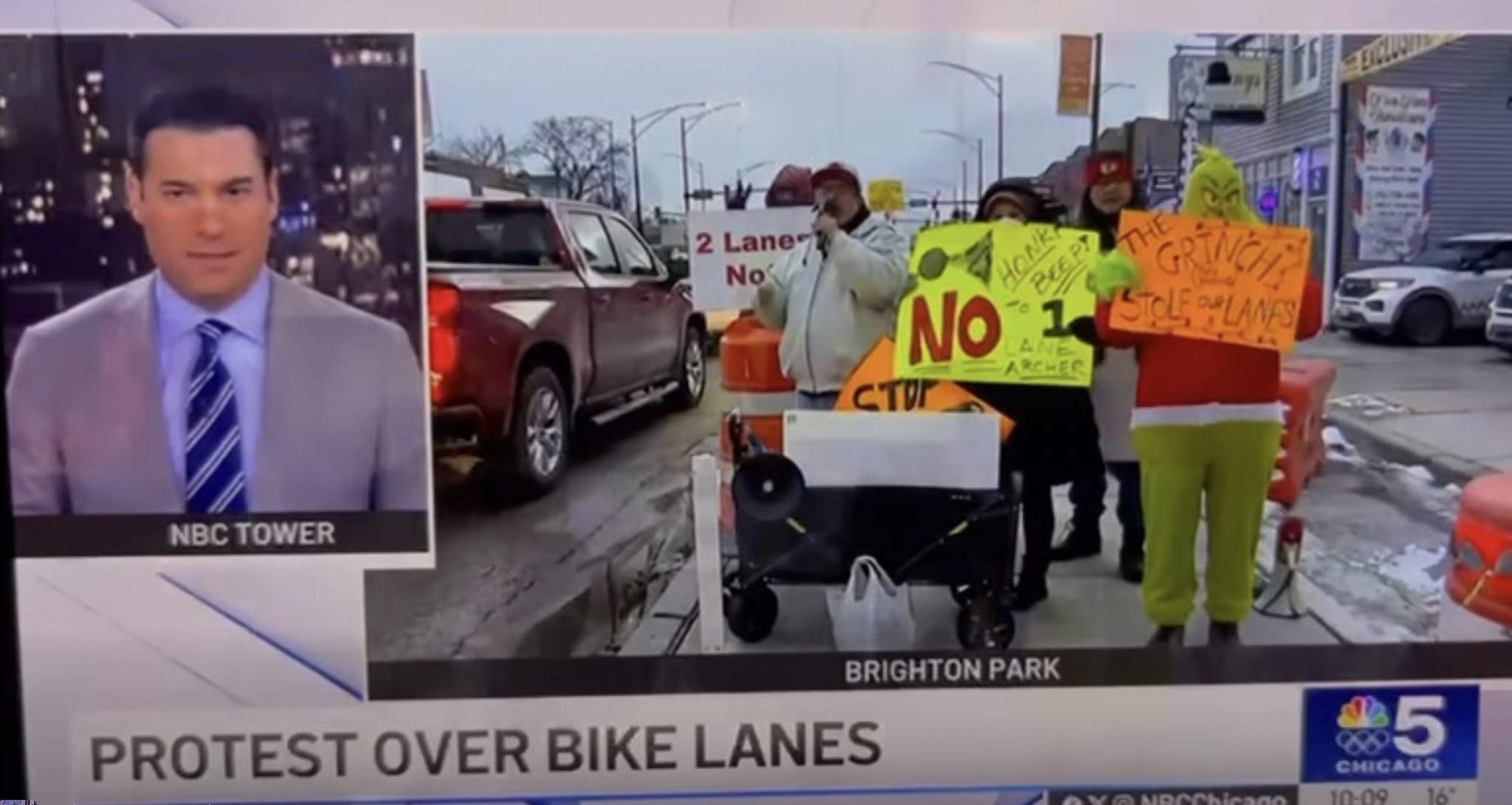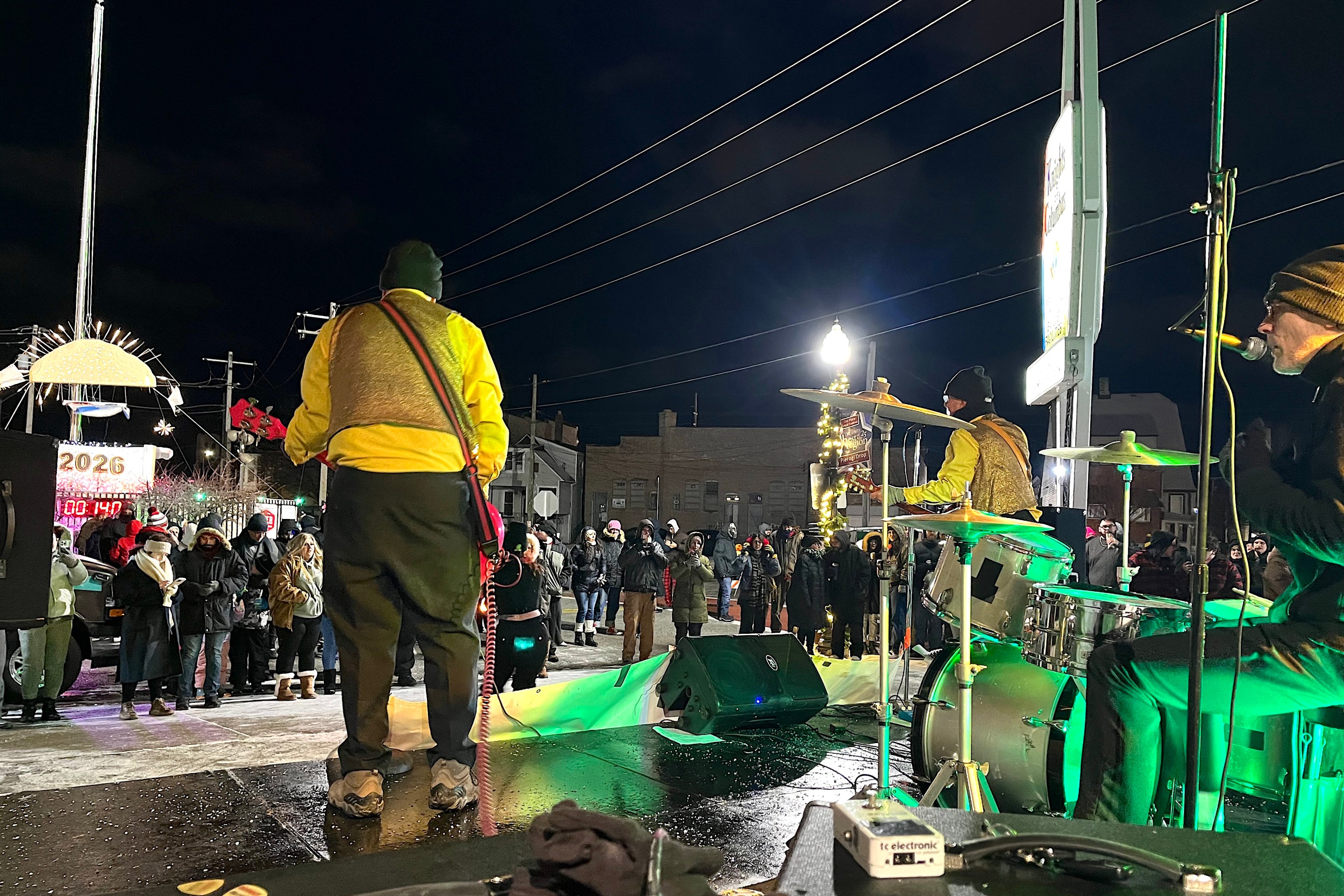Last August 22, the CTA announced it had inked a $31 million contract with a private security firm to provide up to 50 K-9 teams, consisting of two unarmed guards and a dog, to patrol the 'L' system. Ever since then, I've been trying to find out exactly what the purpose of the dogs is, and the transit agency has been stonewalling me.
"As part of ‘Meeting the Moment’ [the CTA's COVID recovery strategy] we promised we would be increasing security to ensure customers’ peace of mind when choosing to take the CTA," agency president Dorval Carter Jr. stated in a news release about the dog teams. "The addition of the K-9 units is just one way we’re following through on our commitment to security for our customers, as well as our frontline employees."
In March 2022, the city had announced another $70 million contract for unarmed security guards on the 'L', which more than doubled the number of unarmed guards in the system to over 300, as well as additional policing of the system. These yellow-vested guards are usually young people, and are often seen hanging out on platforms or in rail cars in large groups. Last spring some of them told Block Club Chicago they feel ill-prepared for the task. "“We’re unsafe on the trains because we’re just kid guards,” one said.
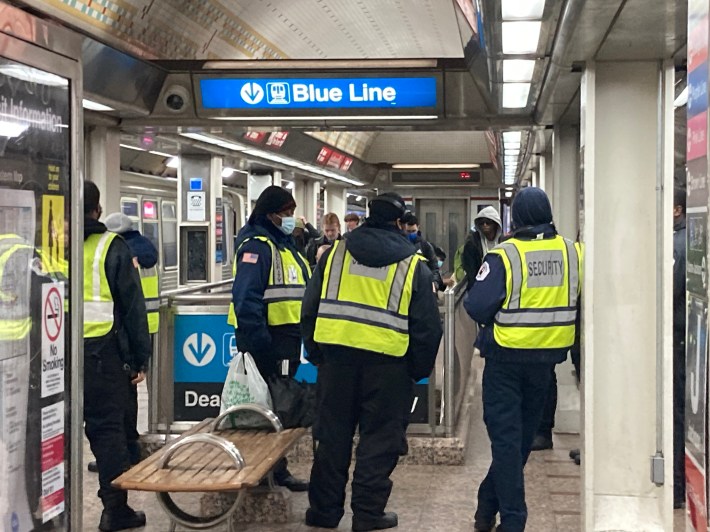
The 18-month dog team contract with the firm Action K-9, paid for from the CTA's operating budget, also covers supervision of the teams and supporting equipment. The agency promised that all guards working in the units would have a valid security dog handler's license and will "have undergone all required training prior to their deployment on CTA properties." While the transit system has used guards with dogs from this company before, the CTA said that by allowing for the deployment of two guards with each pooch, the current contract "will allow each K-9 team to better handle a variety of situations."
The press release said that, among other tasks, the dog teams would be stationed near turnstiles to deter turnstile jumping "and prevent fare evasion before it might lead to other illicit activities." In a candidate debate last week, Mayor Lori Lightfoot repeated that talking point: "The problems [on the ‘L’] begin with someone jumping the fare."
Obviously, many or most people who illegally climb over turnstiles or slip through wheelchair gates at CTA stations don't commit any other infractions, let alone serious crimes, while they're in the system. Those people are evading the fare simply because they're unable or unwilling to pay it. (Yes, fare evasion should be decriminalized, and it would be great if we could offer reduced or free fares to low-income residents or, heck, everybody.)
There may be some truth to the argument that reducing turnstile jumping helps prevent more serious issues on the 'L'. But, due to the ubiquity of security cameras in the system, the CTA likely has data on how common it is for people who commit robberies and assaults on platforms and trains to enter stations illegally. However, since the agency hasn't released any numbers on that topic, many transit advocates have understandably questioned whether cracking down on fare evasion is a sensible strategy for reducing crime.
But even if one assumes that's a sound approach, we're still left with the question, how exactly can the dogs be used, not only to enforce fares, but to fight crime elsewhere in the system? In late August I asked the CTA whether the animals can be unmuzzled and/or unleashed on suspects. Not that I would want to see dogs sicced on turnstile jumpers, but the public has a right to know these things. "For reasons of security, we won’t provide info regarding the specific utilization of the K-9 dogs," a spokesperson replied.
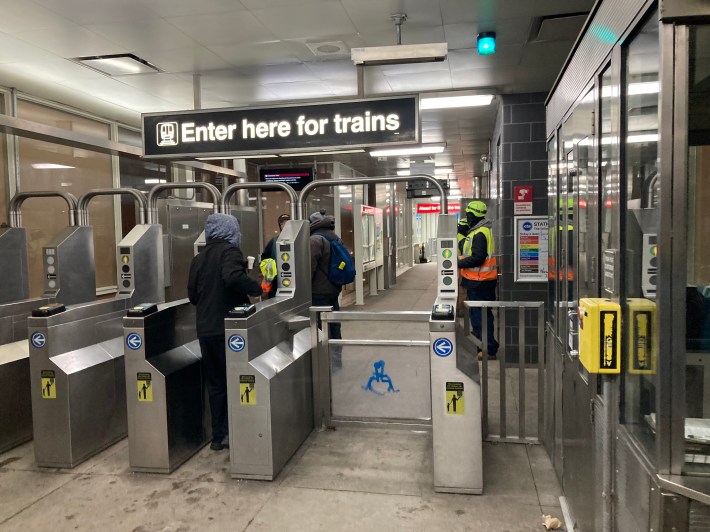
Instead, the spokesperson implied that the fact that the deployment of K-9 units is a common strategy among U.S. transit systems and other transportation facilities means that's it's a good one. They noted the dogs are used on just about all American rapid transit networks, as well as Metra, Amtrak, and airports. They also provided links to half a dozen reports on the subject from entities including the U.S. Department of Justice, the TSA, the Transportation Cooperative Research Program, Police magazine, a UK security firm, and, uh, Disney World.
The CTA spokesperson concluded, "Professional, well-trained K-9 units create a greater sense of higher-level security by their mere presence. A potential criminal/wrongdoer is less likely to engage in improper behavior in the presence of a K-9 unit."
But why? Does it actually make less sense to commit an infraction or crime in the presence of two unarmed guards and a dog, as opposed to just the guards?
In early September I tried submitting a Freedom of Information Act request to the CTA on the subject, which is sometimes an effective strategy to force government entities to cough up info they'd rather not disclose. A month later I got a letter in response (read a portion of it here) stating that, yes, the CTA had some internal emails that might answer my question but, no, they weren't going to give them to me. The message cited a loophole in the FOIA law that allows agencies to withhold "Preliminary drafts, notes, recommendations, memoranda and other records in which opinions are expressed, or policies or actions are being formulated."
It wasn't until last weekend that I finally got the answer I was seeking, straight from the horse's mouth. Or should I say German Shepherd?
Shortly before 1 a.m. last Sunday, I was returning from a concert in Berwyn to my home in Uptown, transferring from the Forest Park branch of the Blue Line to the north Red Line at Jackson, one of the CTA's most crime-prone locations. There I encountered a K-9 unit, the first one I recalled seeing since the August announcement. The guards were dressed in black from head to toe, with only their eyes exposed, looking a bit like riot cops.
I asked one of them if they're allowed to take the muzzle off the dog, and/or unleash it on an offender. He said they can only do that if a guard's life is in danger.
That policy makes some sense on one level, I suppose. If unarmed guards are expected to confront people breaking the law, it's not unreasonable for them to have some kind of self-defense method. (Although wouldn't pepper spray be more cost-effective and less likely to cause serious injury than a dog attack?)
However, if a person is aware that the dogs can't be sicced on suspects, except for in life-or-death scenarios, the canines are completely useless as a deterrent. For example, if a potential turnstile jumper wouldn't be scared off by the presence of two unarmed guards alone, why would the person care that the guards have a dog, since it can't be used to chase a nonviolent offender?
The Police magazine article the CTA spokesperson cited notes that guard dogs can potentially be used for "apprehending fleeing subjects." But that's generally not the case on the 'L'. The CTA's dogs are only useful as a deterrent because the agency hasn't been transparent to the public about how the program works.
A CTA spokesperson did not deny that what the guard told me was accurate. "K-9 units are intended as a deterrent to fare evasion and other improper conduct, not as a weapon. K-9 units are absolutely not intended to be used to attack any individual evading a fare."
But, again, once the public learns how the dogs can and can't be used, they will be about as effective for deterring rule-breaking and crime as life-sized stuffed animals. That begs the question, why exactly are we spending $31 million in taxpayer money on K-9 units instead of proven rail safety solutions like unarmed, well-trained Transit Ambassadors?
Or we could simply spend that money to hire more train operators. That way customers wouldn't have to spend long periods waiting at stations due to skipped runs, which would mean less risk of victimization. That might be the most cost-effective crime prevention strategy of all.

Did you appreciate this article? Please consider making a tax-deductible donation to help fund Streetsblog Chicago's next year of publication. Thanks!
